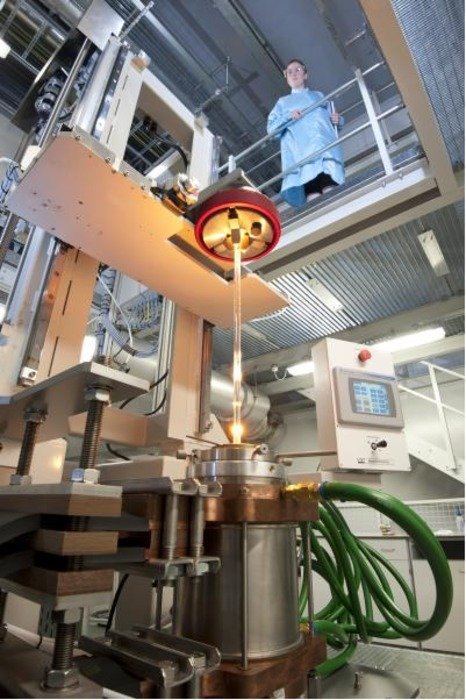This is a drawing tower used to create fiber optic cables at the University of Southampton. Credit: University of Southampton
SOUTHAMPTON, England, March 28 (UPI) -- A laser system using telecom technology may produce a next-generation particle accelerator similar to the Large Hadron Collider in Switzerland, physicists say.
The International Coherent Amplification Network consortium, an international group of physicists from a number of research organizations, said a laser system composed of massive arrays of thousands of fiber lasers could be used for both fundamental research at laboratories such as the European Organization for Nuclear Research (CERN) in Meyrin, Switzerland, and more applied tasks such as proton therapy and nuclear transmutation.
Lasers can provide extremely short bursts of energy of great power measured in petawatts -- 1,000 times the power of all the power plants in the world, the consortium said in a study published in Nature Photonics.
Such a system could be used for applied tasks in medicine, such as proton therapy for cancer treatment, or the environment, where they could offer the prospect of reducing the lifetime of dangerous nuclear waste from 100,000 years to decades or less, a release from Britain's Southampton University, a consortium participant, said Thursday.
Such laser accelerators would be much more compact than present day systems, the researchers said.
"One important application demonstrated today has been the possibility to accelerate particles to high energy over very short distances measured in centimeters rather than kilometers as it is the case today with conventional technology," said Gerard Mourou of Ecole Polytechnique in Paris, another consortium institution.
"This feature is of paramount importance when we know that today high energy physics is limited by the prohibitive size of accelerators, of the size of tens of kilometers, and cost billions of euros.
"Reducing the size and cost by a large amount is of critical importance for the future of high energy physics," he said.















